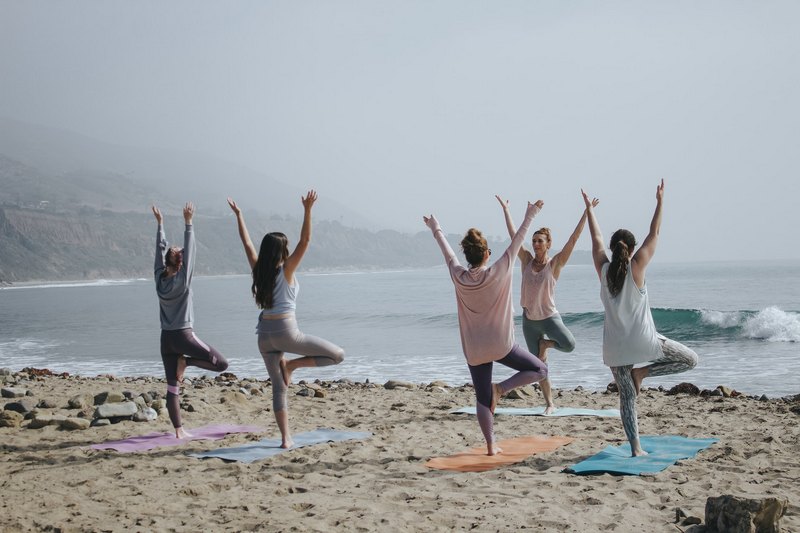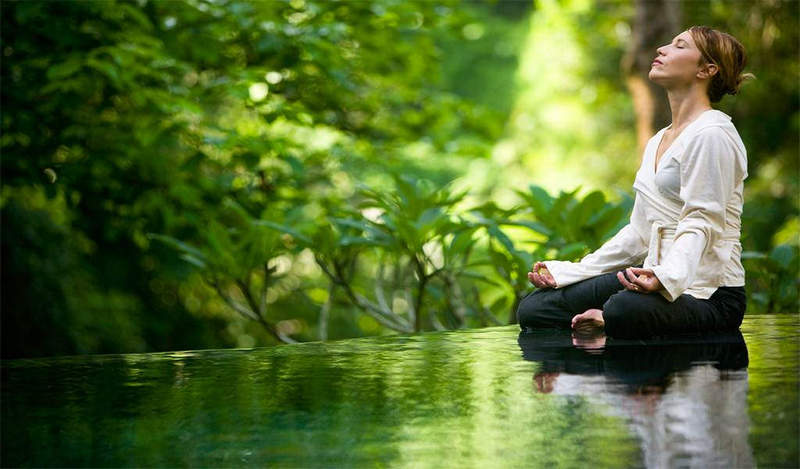In the past years, we can talk about a widespread shift in the tourism industry towards more conscious choices. Be it ecovillages, yoga retreats, or voluntourism, the trend seems to be steadily shifting away from “Sun, Sand and Sex” to “Serenity, Sustainability and Spirituality.” (as journalist Imtiaz Muqbil states during the first international conference on spiritual tourism in 2013).
Recently, more and more people start to look for authentic, meaningful experiences during their travels, not just for holidays. Moreover, we are starting to acknowledge the indirect impact that we have upon the places we visit, and the direct impact they have upon ourselves. It seems like we are finally starting to be more conscious about what we are leaving behind.
What is conscious travel

Being related to responsible and sustainable traveling, conscious travel is based on 9 core principles, often referred to as “the 9 Ps: A new Perspective, with Purpose, about People and Places where Power shifts to the community, motivated to Protect the ecosystem, at a slower Pace and a closer Proximity, all resulting in a Pull to a destination as its attraction consequently flourishes.”
For us, the tourists, conscious travel simply refers to the choices we make; seeking alternatives that are beneficial to the world and to ourselves on a longer-term, rather than over-touristy and fast-paced vacations that conventional mass tourism got us used to, and that can only do harm around us.
In fancier terms, principles of conscious traveling focus on factors as for example:
- Increased economic benefits for the locals
- Better working conditions for the locals and access to the industry
- Involving locals in the decisions that affect their lives and life chances
- Conservating the natural and cultural heritage
- Embracing diversity
- Encouraging more meaningful connections with local people, and a greater understanding of local cultural, social, and environmental issues
- Access for physically challenged people
- Respect between tourists and hosts, building local pride and confidence
But, you see, the advantages of making more conscious choices when traveling don’t impact only our surroundings, but also ourselves. We are improving our thought processes, our mood, attitude, and behavior, through a slightly more spiritual or philosophical approach.
Ultimately, the goal of conscious travel is to “create an environmentally sustainable, socially just and spiritually fulfilling travel economy that does not cost the earth”. Ecovillages and yoga retreats are two examples of such ways of traveling, which are becoming more and more popular.
Ecovillages – small heroes of a more sustainable world

While back in time many of the ecological communities were linked to the hippy movement, nowadays people from more and more diverse backgrounds – a great part being middle-class intellectuals – are attracted to this kind of lifestyle and experiences, understanding and identifying themselves with their ideologies. At the present moment, there are more than 10,000 ecovillages in the world, most of which in rural areas.
What exactly are ecovillages
By one of its many definitions, an ecovillage is a self-sufficient intentional community that lives for and from the natural environment surrounding it.
Ecovillagers are characterized by a strong reflectivity concerning global issues and they act as “little heroes” of their cultural and natural surroundings. They find and live by alternative solutions to our world’s problems (consumerism, globalization, environmental, economic, and ethical crises, alienation etc.).
They are consciously designing their ecological villages according to their vision, context, culture, and interests, so no two are alike. Anyhow, they are all trying to follow the line of sustainability, having in mind its four dimensions: social, cultural, ecological, and economic.
The social dimension

There are usually not more than 500 inhabitants living in an ecovillage, most of them having between 50 and 200 members. This leads to close acquaintances, people having the possibility to engage directly with all the members of the community. The community’s dynamics are therefore shaped in a more natural way.
Also, this creates the possibility for each member to take their space in the community, contributing and making decisions that affect everyone’s lives, on a very transparent basis. Individual responsibility but also support and mutual trust are values highly prioritized in such settlements.
Often communities also organize various events and workshops open to the public, in order to teach others practical skills and promote values regarding ecology, solidarity, equality, tolerance, diversity, respect, collaboration, and self-sufficiency.
The cultural/ spiritual dimension

Most ecovillages don’t emphasize spiritual practices. They are however embracing culture, cultural diversity, and artistic expression, creating their own traditions and rituals in order to show their respect and appreciation for the Earth and all its living beings.
The ecological dimension

More than anything, ecovillages are oases not only for protecting nature but also for regenerating it. To achieve this, people undergo many activities:
- growing their food as much as possible within the community through practices like permaculture, without the use of chemicals
- using environmentally-friendly technologies for building, managing waste, and treating wastewater
- relying on renewable energy resources
- Recycling and upcycling
- Protecting the biodiversity
- Reforesting and restoring habitats
The economic dimension
Ecovillages are promoting economic vitality. They might function on barter systems, as well as having their own currencies, but most usually economic vitality refers to:
– keeping the money in the community
– circulating it through as many hands as possible
– earning it, spending it, and investing it in member-owned retail and service businesses
– saving it in home-grown financial institutions
Why vacation in an ecovillage should be on your bucket list

Living in an ecovillage is not only a once in a lifetime experience, but can easily turn into the experience of a lifetime.
The ecovillage reality is so far from the one that we are used to in our busy, agitated lives, and daily 9 to 5 jobs, that after living in an ecovillage even for just a short span of time your perspectives will shift and widen-up to a new dimension.
If you choose to spend a few days or even a few months in an ecovillage, you should expect to be an active part of those communities and not just a passive visitor. Ecovillages are not exactly vacation resorts and shouldn’t be treated as such.
They are about lifetime learnings and skills to help you live a more sustainable and healthy life.
They are about continuous learning, but also sharing what you know with others. It’s about having a small but visible impact.
They are about nurturing a sense of belonging and finding true community with very different, but like-minded people.
They are about daily interaction with the soil, water, wind, plants and animals; being in close contact and relation with nature.
Let’s not even mention the savoury highly-nutritive food and beautiful natural surroundings.
Curious about an ecovillage experience? Here’s how to join one

Depending on what kind of experience you are seeking, ecovillages usually offer a wide range of options for visitors; from boot camps and workshops to short visiting stays, funded exchange programs, or volunteering.
All these options are usually open to anyone, in periods of time and under terms settled by the community members.
Going from the status of a visitor to that of a volunteer, and even a member, your responsibilities in the community will also increase, and the costs (for rent, food, etc) will drop. This is a natural exchange since you will be contributing more to the community.
How to become a member of an ecovillage

If you want to become a full-time member living in an ecovillage though you’ll have to take a few extra steps. Each ecovillage will have its own rules by which it works, but most commonly you’ll first be volunteering for a while (maybe a month, maybe a year, maybe more). Members will afterward asses if you are integrating well into the community and can become a member. This time is also meant for you to understand better if it’s a lifestyle that you see yourself living in, and if you enjoy your time with the other members.
Another more practical reason is to exclude the possibility of speculations with the land ownership and to prevent the creation of businesses or endeavors which would not fit into the concept of the ecovillage.
How to find ecovillages

Most of the official ecovillages you will be able to find in the Global Ecovillage Network. According to the destinations you’d be most interested in, you can select your favorites here: ttps://ecovillage.org/projects/map/ You can then access their pages and read more about them. See what interests they have, what they promote, and most importantly, check if they accept visitors.
As a tip – the pages are not usually updated so it’s better to contact them directly.
Yoga retreats – the favorite choice for conscious, spiritual, and wellness tourism

If ecovillages are a clear solution to the sustainability crisis that our world is confronting with, yoga retreats and other wellness programs as such deal mainly with a different kind of crisis, an internal one. City lives can be stressful and often alienating, creating huge distances between people and giving us the sensation that there’s never enough time.
In this context, we need to re-learn how to slow down and connect.
And people found out that yoga is a great way to do so.
There are around 300 million yoga practitioners worldwide, from which about 36.7 million in America (this means 50% more than in 2012). Also, 1 in 3 Americans has tried yoga at least once in their lives. With the Hindu discipline continuing to gain this amount of popularity in the western world, it’s not surprising that yoga retreats also became more frequented.
What are in fact yoga retreats
At its core, yoga is meant to help you create an inner balance in mental, physical, and emotional states. Therefore, in a yoga retreat, the focus will turn towards all these three aspects. You can also see retreats as a more proactive way of staying healthy, promoting deep self-study and a balanced, more conscious lifestyle, instead of short-term fixes.
Who are yoga retreats for?

There is a large variety of people choosing to go for a yoga retreat in their vacation; from pensioners and pre-pensioners to busy business people and backpackers, or people seeking therapy after experiencing a difficult stage in their lives.
What all these people have in common though is the wish for peace, quietness, and maybe for a deeper understanding and connection with themselves, the others, and the environment.
Do you need to know yoga to go on a yoga retreat?
Yes and no.
It is, no doubt, better to have some tangentiality with yoga from before, so that you’ll more or less know what to expect in a retreat. If you have been customarily practicing yoga for a while now, you will already have a better understanding of the exercises and practices in the retreat.
Anyhow, if you have never tried yoga before but you feel that is something you might enjoy or are curious to try, you have unlimited beginner programs to choose from. They are specifically crafted to introduce beginners in the “yoga world”, instructing them on the fundamentals of all basic yoga poses, correct alignments, and breathing techniques and offering all the needed information, yet not overwhelming the participants.
The main advantage of this approach is that you’ll notice a huge improvement from one day to the other.
Where are the best yoga retreats

Current studies report that only 8% of yoga practitioners have attended a yoga retreat. Anyhow 62% of “yogis” report interest in attending a retreat in the near future. The tourism and wellness sector saw the opportunity and along with the high demand also grew the number of yoga retreat opportunities, right now being a reality in almost all the corners of the world.
Destinations such as India, Sri Lanka, and Indonesia anyhow are some of the top choices for authentic yoga experiences.
One of the most prestigious and luxurious retreats at the same time is the Ananda Spa in India. It was voted as “World’s Best Destination Spa” in both the 2019 and 2020 Conde Nast Traveler’s Readers Choice Awards, offering a multitude of programs and intensive wellness care besides yoga.
Anyhow, not all retreats are best for everyone. You can find the most suitable retreat for you with a quick search on websites like https://www.bookyogaretreats.com/. Look for what interests you the most be it proximity, price, specific techniques, skill level, or the outdoors environment. You’ll surely find something right for you.
Don’t forget to check the reviews though. 🙂
How much do yoga retreats cost
It highly depends on the duration, activities, location and level of luxury that the retreat provides. It can depend also on the instructors that hold the workshops and how well-known they are, but also on the number of participants. Depending on what you are looking for, prices can vary from only $500 up to $3000.
What to expect from a yoga retreat (besides yoga)

Such experiences bring great value to the visitors, especially in the long-term, so they are perfect for recharging your batteries. Besides yoga, most retreats also provide nutrition education, they teach preventative medicinal practices and mindfulness methods – all of which can (and are meant to) be further applied in one’s day to day life.
You will always leave a yoga retreat with increased physical tonus and flexibility, a better mood, less stress, and lessons for a lifetime. This is due to a combination of factors, and not only due to the activities themselves.
Firstly, people are encouraged to reconnect with nature and thus reduce stress and slow down the tumult of life. The picturesque natural settings where such retreats usually are, make this task very easy.
Secondly, it’s the like-minded people that you will meet on a retreat, the ideas you will exchange, and the common peaceful atmosphere which will all have a great positive impact.
Not to mention that eliminating outer distractions, like digital gadgets and the online world, will bring you the mental space you need to develop new connections, understand things differently, and finally, truly relax.
What most people don’t expect though is learning how to cope with personal issues. According to researches, yoga tourists generally experience feelings of accomplishment, gratitude, deep engagement, and positive emotions during their retreat, but also a long time after. All these lead to a more balanced lifestyle, improved relationships with others, and gaining a greater meaning and clarity in their lives.
Wrapping up

Overtourism, sustainability crisis, drastic climate change, alienation – can conscious travel be an answer to fighting all these issues?
They can be one answer for sure, but we still need many more.
It’s time to cultivate mentalities and lifestyles that will allow us to give back to the world. If you want to know more about sustainable development goals and how are they implemented worldwide visit the official UN SDG website. Also, for related ideas keep an eye on the work of Anna Pollock, the creator of Conscious Travel.
Hope you enjoyed our article and that you found some useful information. Please don’t hold back from sharing with us your opinions or other information on conscious travel. It’s a topic that interests us a lot.

